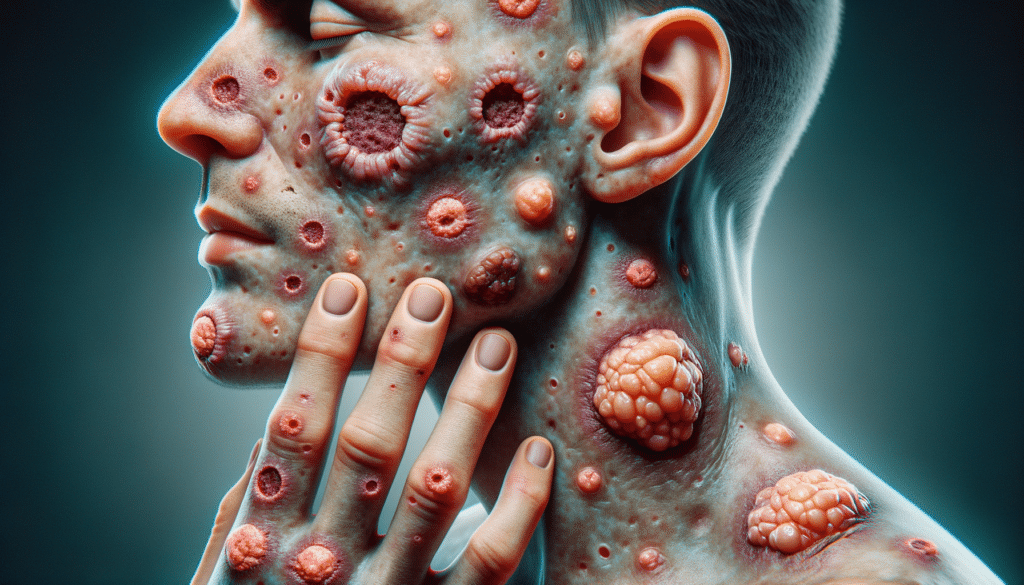Introduction to Squamous Cell Carcinoma
Squamous cell carcinoma (SCC) is a common form of skin cancer that arises from the squamous cells, which are flat cells located in the outer part of the epidermis. It is essential to understand the symptoms and signs of SCC because early detection significantly improves treatment outcomes. In this article, we will delve into the key symptoms of squamous cell carcinoma, explore how to identify these signs early, and discuss potential treatment approaches.
Recognizing the Symptoms of Squamous Cell Carcinoma
Squamous cell carcinoma typically manifests as a persistent, scaly red patch with irregular borders that may crust or bleed. These lesions often appear on sun-exposed areas of the body, such as the face, ears, neck, lips, and backs of the hands. It’s crucial to pay attention to any new growths or changes in existing moles or skin lesions, as these can be indicative of SCC. Common symptoms include:
- A rough, scaly patch on the skin that may bleed or become crusty.
- A raised growth with a central depression that occasionally bleeds.
- An open sore that does not heal or heals and returns.
- A wart-like growth that may crust or bleed.
Understanding these symptoms can help in identifying potential cases of SCC early, allowing for timely medical intervention.
Identifying Early Signs of Squamous Cell Carcinoma
Early detection of squamous cell carcinoma is crucial for effective treatment. The early signs of SCC can sometimes be subtle and easily overlooked. It’s important to conduct regular self-examinations of your skin to catch any unusual changes early. Early signs to watch for include:
- Red, scaly patches that persist despite treatment.
- Small, firm nodules that may be tender to the touch.
- Changes in the size, shape, or color of a skin lesion.
- New growths that appear suddenly and increase in size.
Consulting a dermatologist for a professional evaluation is recommended if you notice any of these signs, as they can provide a definitive diagnosis and discuss possible treatment options.
How to Differentiate SCC from Other Skin Conditions
Distinguishing squamous cell carcinoma from other skin conditions can be challenging, as its symptoms may overlap with benign skin issues. However, there are certain characteristics that can help differentiate SCC from other conditions:
- SCC lesions are often persistent and do not respond to over-the-counter treatments for common skin conditions.
- The texture of SCC lesions is typically rough and scaly, unlike the smoother texture of benign growths.
- SCC lesions may bleed easily and form a crust, whereas benign lesions rarely do.
- Unlike benign moles, SCC lesions may grow rapidly and change in appearance over a short period.
If there’s any doubt about a skin lesion, a biopsy may be performed to confirm the diagnosis and rule out other conditions.
Conclusion: Taking Action on Squamous Cell Carcinoma
Understanding the symptoms and signs of squamous cell carcinoma is vital for early detection and successful treatment. Regular skin checks, both self-examinations and professional evaluations, can help catch SCC early. If you notice any persistent or unusual changes in your skin, it is important to seek medical advice promptly. With early detection and appropriate treatment, the prognosis for squamous cell carcinoma is generally favorable, underscoring the importance of awareness and vigilance.


